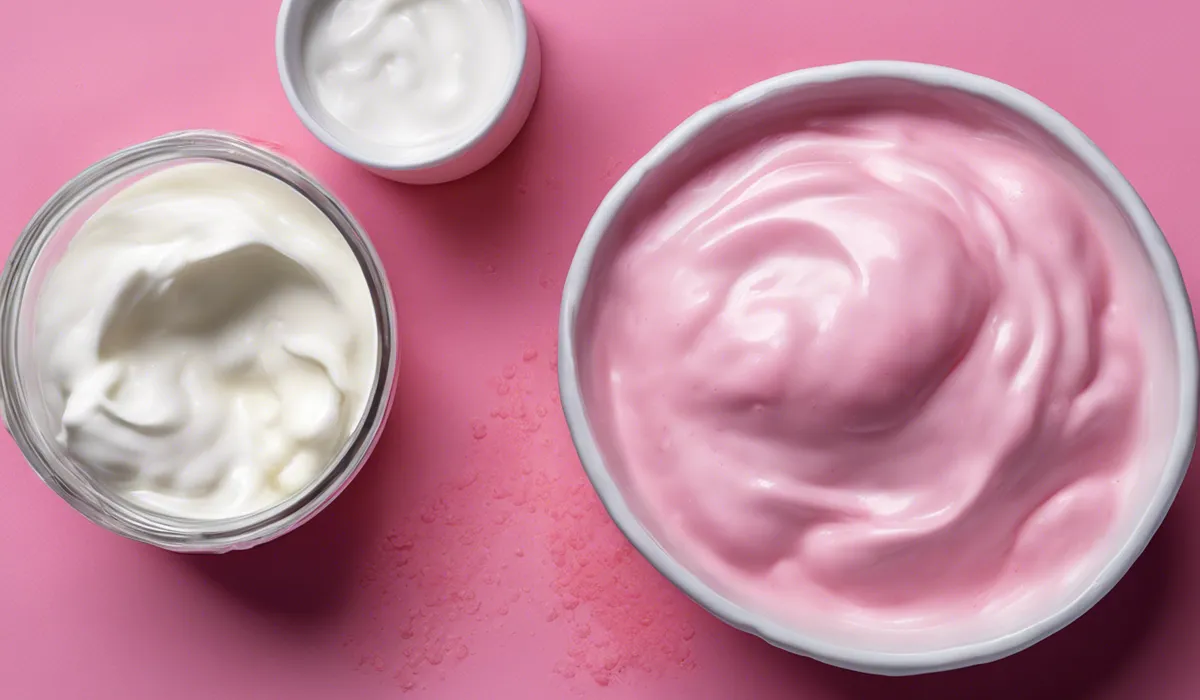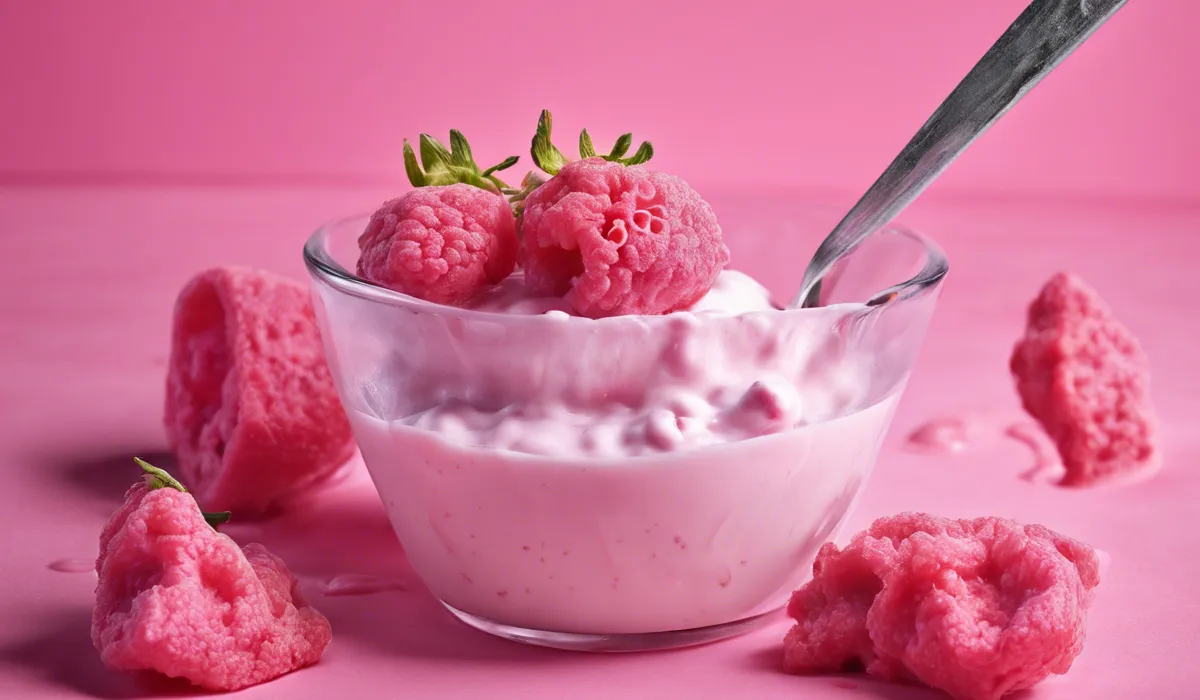Pink mold on yogurt is often a sign of contamination by harmful bacteria or mold. Consuming it can cause food poisoning or allergic reactions. It should be considered dangerous and the affected yogurt must be discarded to avoid health risks.
Understanding Pink Mold

What is Pink Mold?
Pink mold is a common name for a type of bacterial or fungal growth that can appear on various surfaces, including food products like yogurt.
The term “mold” is a bit misleading as pink discolorations can be caused by bacteria as well. These microorganisms can produce pigments that give them a distinctive pink coloration.
Microorganisms Behind the Color
The pink discoloration in food products, especially dairy items, is typically caused by certain species of bacteria or mold.
One common culprit is Serratia marcescens, a bacterium that thrives in moist environments and can produce a reddish or pink pigment.
Another is a yeast called Rhodotorula, known for its ability to form pink colonies.
Optimal Conditions for Growth
Pink mold on yogurt tends to grow in conditions that provide moisture, warmth, and nutrients.
Yogurt, being a dairy product, is rich in nutrients and can become an ideal breeding ground for these microorganisms if not stored properly or if it’s past its expiration date.
Identifying Pink Mold in Yogurt
Detecting pink mold involves looking for any unusual pink spots or streaks on the surface of the yogurt.
It’s important to note that any discoloration or off-smell can indicate spoilage, and the yogurt should not be consumed.
Health Implications of Consuming Pink Mold

Immediate Health Effects
Consuming yogurt contaminated with pink mold can lead to food poisoning symptoms such as nausea, vomiting, diarrhea, and abdominal pain.
These symptoms can occur soon after ingestion and may vary in severity depending on the individual’s health and the amount of contaminated yogurt consumed.
Risks of Long-Term Exposure
Long-term exposure to mold toxins, particularly from fungi that produce mycotoxins, can pose serious health risks.
These risks include respiratory issues, immune system suppression, and in some cases, exposure to carcinogenic compounds.
Who is Most at Risk?
Individuals with weakened immune systems, such as young children, the elderly, or those with chronic illnesses, are particularly vulnerable to the effects of consuming mold-contaminated foods.
Pregnant women should also avoid exposure to mold to prevent potential risks to the fetus.
Understanding Mold Allergies
Some individuals may have allergies to certain molds or bacteria, which can cause additional symptoms like respiratory distress, coughing, or skin rashes.
If you have a known mold allergy, avoiding mold-contaminated foods is crucial.
Prevention and Handling of Pink Mold in Yogurt

Storing Yogurt Properly
To prevent the growth of pink mold, yogurt should be stored in the refrigerator at temperatures below 40°F (4°C) and consumed before the expiration date.
Sealing the yogurt container tightly after each use also helps keep mold at bay.
Action Steps Upon Discovery
If you discover pink mold on your yogurt, the safest course of action is to discard the entire product.
Do not attempt to scoop out the moldy portion, as the bacteria or mold may have already spread throughout the yogurt.
When to Throw Away Moldy Food?
As a general rule, any soft food with visible mold should be discarded. Mold can penetrate deep into these foods, making it unsafe to simply remove the moldy area and consume the rest.
Understanding Expiration Dates
Paying attention to expiration dates can help you avoid consuming spoiled food. If yogurt is nearing its expiration date, check it carefully for any signs of mold or spoilage before eating.
FAQs About Pink Mold on Yogurt
Is pink mold on yogurt a sign of spoilage?
Yes, pink mold on yogurt indicates spoilage and potential contamination by harmful microorganisms.
Can eating yogurt with pink mold make you sick?
Yes, consuming yogurt with pink mold can lead to food poisoning or allergic reactions.
Should I throw away yogurt if it has pink mold on it?
Yes, yogurt with pink mold should be discarded immediately to avoid health risks.
Is pink mold in yogurt the same as mold on bread or fruit?
Pink mold in yogurt may be caused by different types of bacteria or mold than those commonly found on bread or fruit, but any visible mold on food can be dangerous.
What should I do if I accidentally consumed yogurt with pink mold?
If you accidentally consume yogurt with pink mold, monitor your symptoms and seek medical attention if you experience signs of food poisoning or an allergic reaction.
Final Thoughts
Pink mold on yogurt indicates harmful bacterial or mold contamination that poses health risks. Consumption of this spoiled product can lead to food poisoning or allergic reactions.
To ensure safety, one should promptly discard any yogurt showing signs of pink mold to mitigate potential health hazards.
